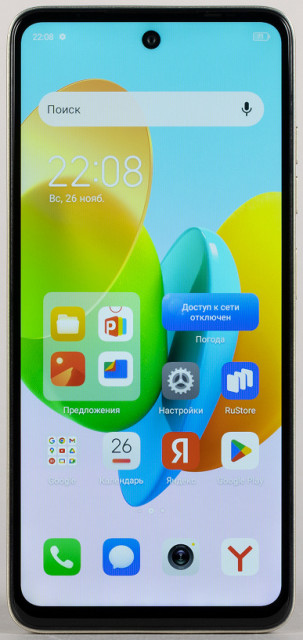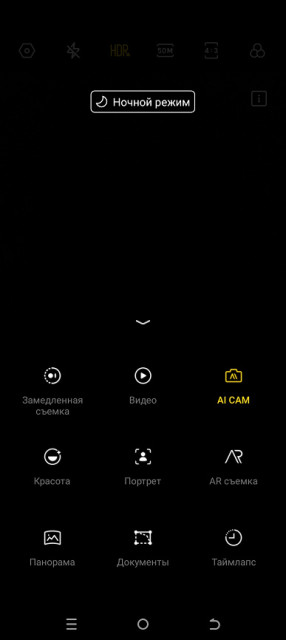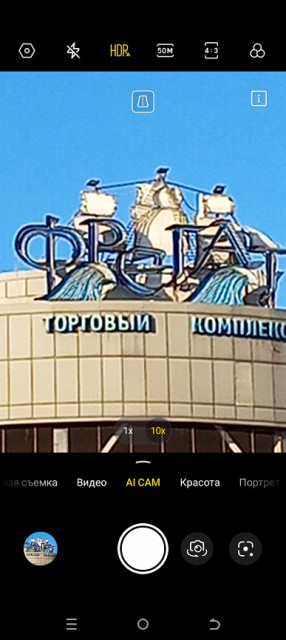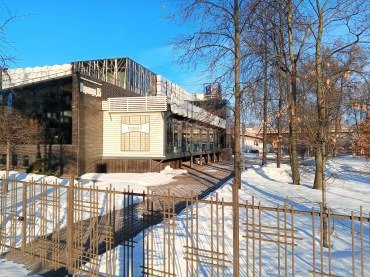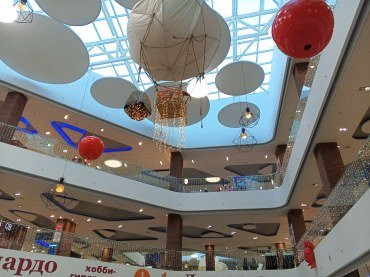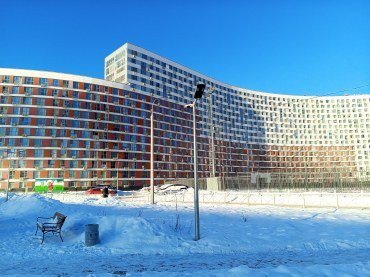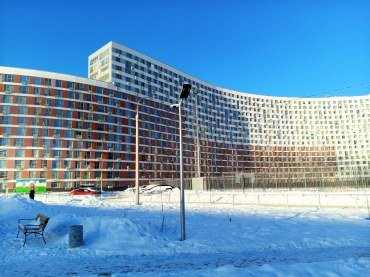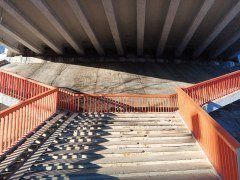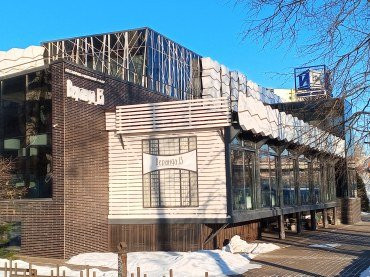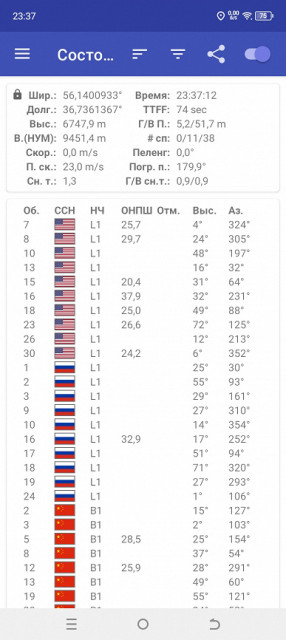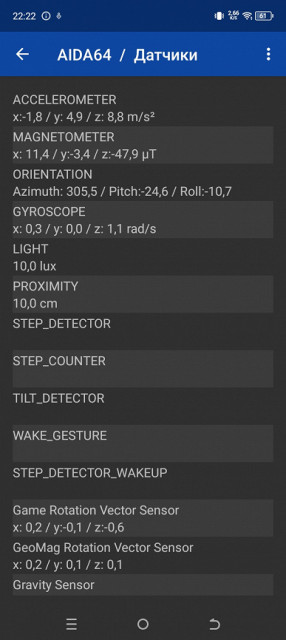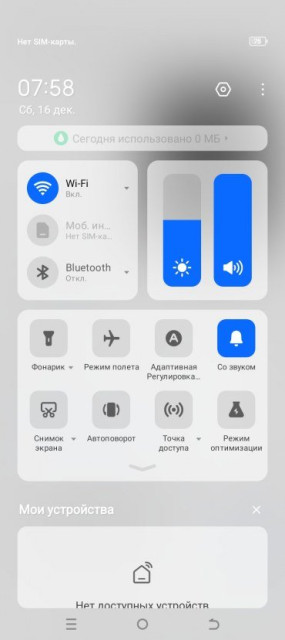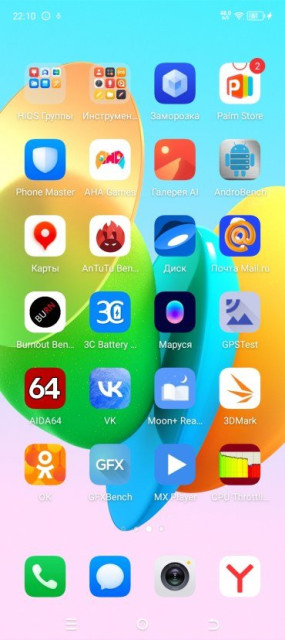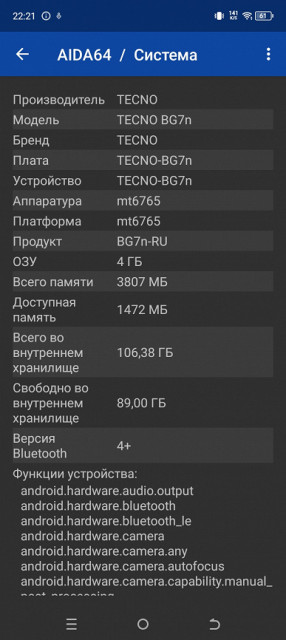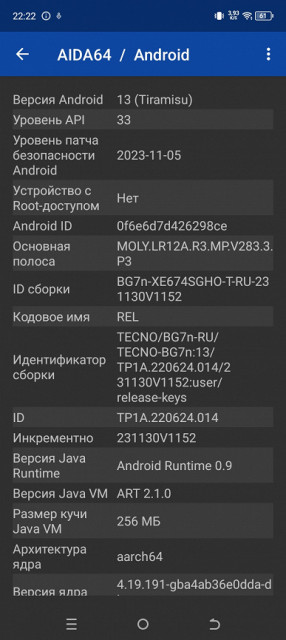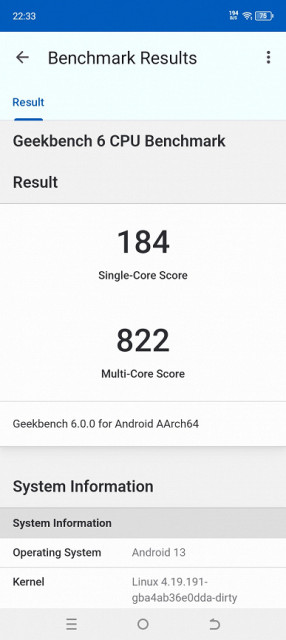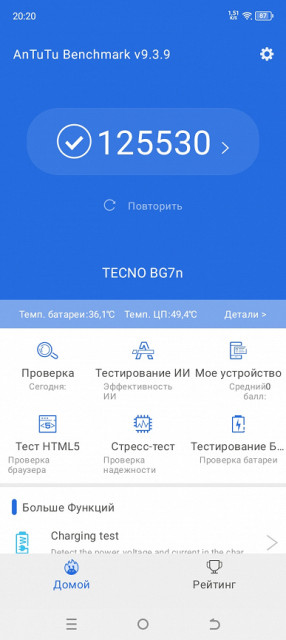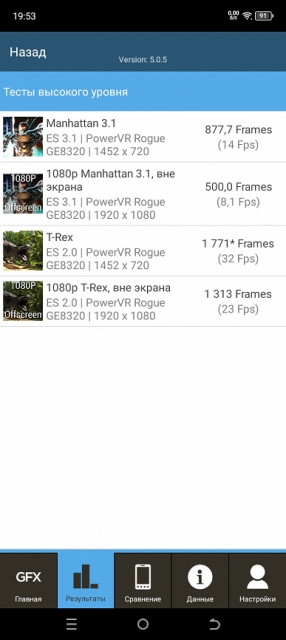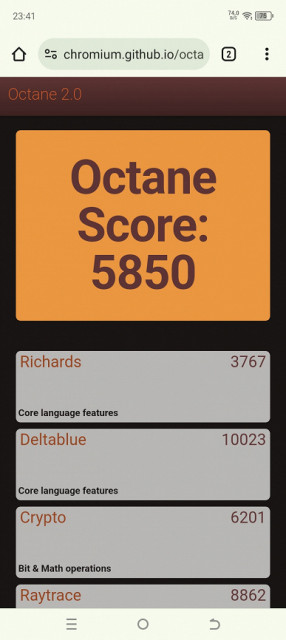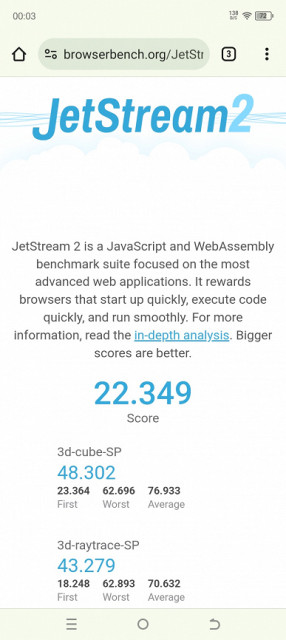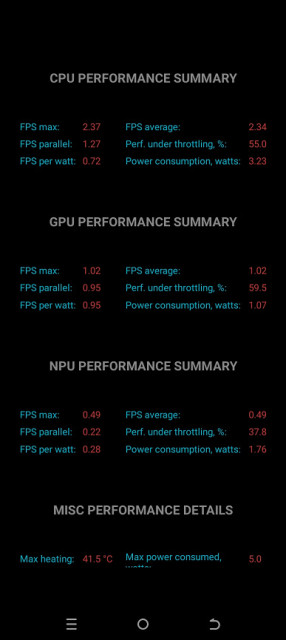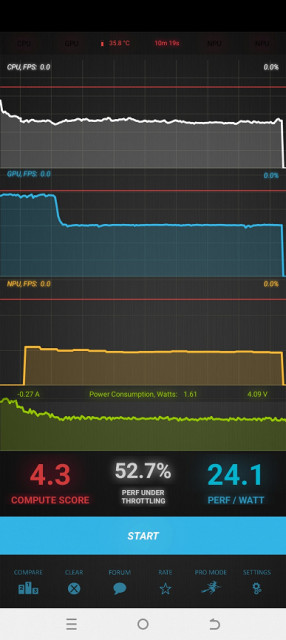We have already discussed the Tecno Spark 20 smartphone from the brand's new lineup, and the Tecno Spark 20C is the most affordable model in the series. Again, the main advantage of budget smartphones is their affordable price, especially if the functionality offered suits your needs.
Key Features of Tecno Spark 20C (Model BG7n)
- SoC Mediatek MT6765 Helio G36, 8 processor cores (4×Cortex-A53 @2.3 GHz + 4×Cortex-A53 @1.8 GHz)
- GPU PowerVR GE8320
- Operating system Android 13, HiOS 13.5
- Touch display IPS, 6.6″, 720×1612, 90 Hz, 20:9, 267 ppi
- RAM 4/8 GB, internal memory 128 GB
- microSD support (up to 1 TB, independent slot)
- Nano-SIM support (2 pcs.)
- Networks 2G GSM, 3G WCDMA, 4G
- GPS, Glonass, Galileo, BDS
- Wi-Fi 5 (2.4/5 GHz)
- Bluetooth 5.2, A2DP, LE
- NFC
- USB 2.0 Type-C, USB OTG
- 3.5mm headphone audio output
- Cameras 50 MP + 0.08 MP, video 1080p@30 fps
- Front camera 8 MP
- Proximity and lighting sensors, magnetic field, accelerometer
- Fingerprint scanner (side-mounted)
- Battery 5000 mAh, charging 18 W
- Dimensions 164×76×8.6 mm
- Weight 193 g
Appearance and ease of use
The Tecno Spark 20C smartphone comes in a cardboard box with a standard set of accessories.
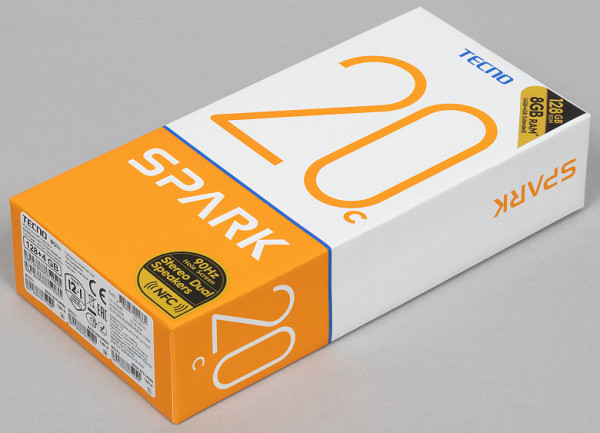
The smartphone comes with a charger with a maximum output power of 18 W, a connecting cable and a protective case.
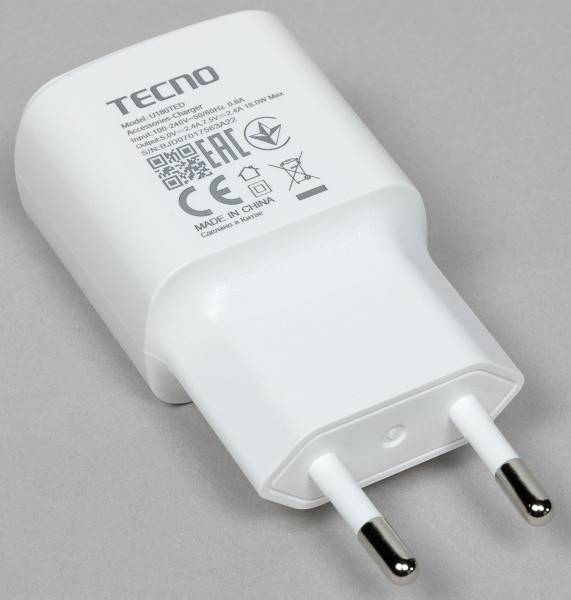
In appearance, the Tecno Spark 20C is almost indistinguishable from the more advanced models in this line — Tecno Spark 20 and Tecno Spark 20 Pro. All smartphones have a modern and relevant design, devoid of beveled edges, with smooth shapes. The surfaces of the device are flat, and thanks to the wide sides, the smartphone fits firmly in the hand.

The side frame is made of plastic, not metal. The back panel is available in two versions: with a smooth matte plastic texture or with a rough, rubberized surface imitating eco-leather. This texture does not collect fingerprints, which makes the case as practical as possible and resistant to traces of use.
In terms of dimensions, the device is quite large, but not heavy. The transitions to the side edges are not sharp, the edge does not cut into the skin of the palm.

The included silicone case is transparent and flexible, with high “growths” around the camera block.

The cameras are designed in the best possible way, following the principles of symmetry, creating an appearance that looks stylish and luxurious. Even though there are three lenses, only one camera is actually used. Tecno's ability to present budget specifications in an elegant 'dress' has surpassed many over the past few years.
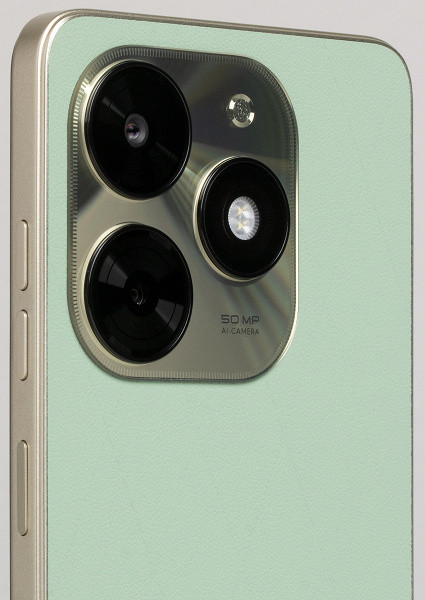
The side buttons are located on one side, the keys are wide and easy to touch. The fingerprint scanner is built into the power and lock buttons, it works clearly and quickly.

The front camera is single, it is installed behind a round cutout in the screen matrix at the top center.

The triple tray can accommodate three cards at the same time: two Nano-SIM cards and a microSD memory card.
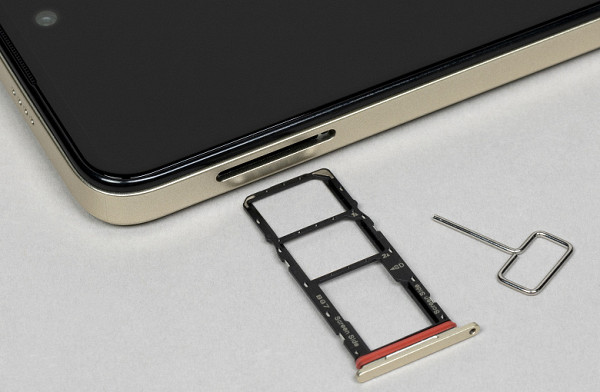
At the bottom end there is a speaker, a microphone, a USB Type-C connector and a 3.5 mm audio output.

There is nothing on the top end except the hole for the top speaker.

The Tecno Spark 20C smartphone does not receive full protection from moisture and dust. The model is available in several colors — white, black, gold and green (the latter with eco-leather coating).
Screen
The Tecno Spark 20C smartphone features a 6.6-inch IPS display with a resolution of 720 x 1612 pixels and an aspect ratio of 20:9. The screen is protected by flat glass. The physical dimensions of the screen are 68x153 mm, pixel density is 267 ppi. The thin bezels on the sides are 3.5mm, the top is 4mm, and the bottom is 7mm. The display supports a 90Hz refresh rate and multi-touch up to five simultaneous touch points.
The front surface of the screen is made in the form of a glass plate with a mirror-smooth surface that is scratch-resistant. The reflection of objects underscores the screen's excellent anti-glare properties, surpassing even the Nexus 7. The outer surface of the screen has a special oleophobic (grease-repellent) coating, which is noticeably more effective than that of the Nexus 7. This makes it easy to remove fingerprints and slows down the formation of fingerprints.
When manually controlling the brightness and displaying a white field on the entire screen, the maximum brightness reaches 530 cd/m². This is a very high figure, especially considering the excellent anti-glare properties, which makes the smartphone convenient for use even in the sun outdoors. The minimum brightness value is 4 cd/m², which allows you to comfortably use the device in complete darkness. There is also automatic brightness adjustment based on the light sensor, ensuring comfortable image perception in various lighting conditions.
The IPS matrix provides excellent image quality, and the auto-brightness function works adequately, although it does not give the user full control. There is no backlight modulation at any brightness level, which eliminates screen flickering.

For comparison, let's present photographs showing the screens of a smartphone (above) and a second device (Nexus 7 — below). The same images are displayed on both screens, while the initial brightness of the screens is approximately 200 cd/m², and the color balance on the camera is set to 6500 K.
White field placed perpendicular to the screens:
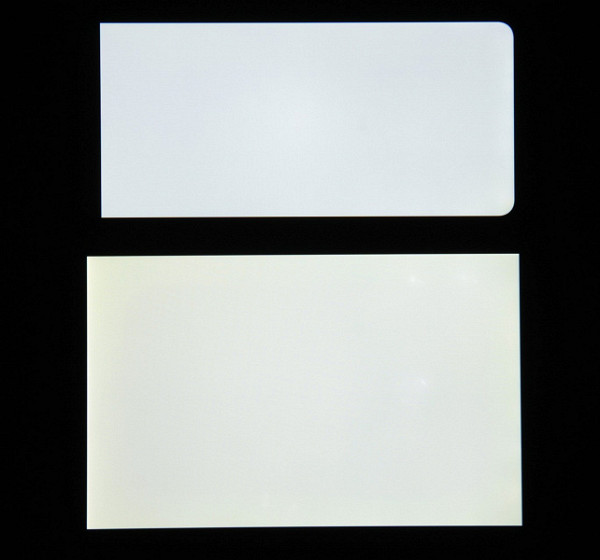
Note the good uniformity of brightness and color tone of the white field.
And a test picture:

The colors on the smartphone screen are naturally rich, while the color balance of the Nexus 7 screen is noticeably different.
The smartphone screen provides excellent viewing angles without causing significant color changes at large viewing angles from the perpendicular. However, when viewed diagonally, the black field becomes noticeably lighter, but remains a relatively neutral gray shade.
When viewed perpendicularly, the uniformity of the black field leaves much to be desired (the brightness of the smartphone’s backlight is set to maximum):

The contrast at the level of the central part of the screen reaches high values, about 1600:1. The response time from black to white and back is 27 ms (on 15 ms + off 12 ms). The transition between halftones of gray at 25% and 75% (based on the numerical value of the color) takes a total of 44 ms.
A gamma curve based on 32 points with equal intervals between grayscale values showed no imperfections in either light or dark areas. The power function approximation index is 2.59, exceeding the standard value of 2.2. At the same time, the actual gamma curve significantly deviates from the standard power-law dependence:
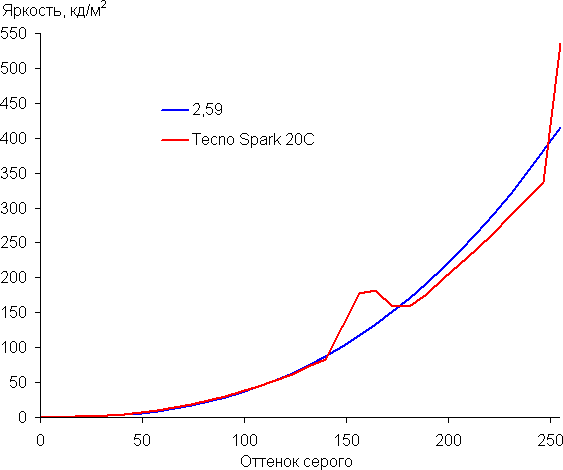
This device has active dynamic correction of the backlight brightness, depending on the nature of the displayed image. In dark medium images, the backlight brightness decreases. This leads to the fact that the dependence of brightness on hue (gamma curve) does not correspond to the gamma curve of a static image, since the measurements were carried out with sequential output of shades of gray almost over the entire screen. In this regard, a number of tests, such as determining contrast, response time and comparing black light at different angles, were carried out using special patterns with a constant average brightness, rather than solid fields across the entire screen. In general, such constant brightness adjustment can cause discomfort, reduce the visibility of shadow gradations in dark images, and impair screen readability in bright light, since the brightness of the backlight is reduced in the middle images that are not the lightest.
Color gamut is close to sRGB:
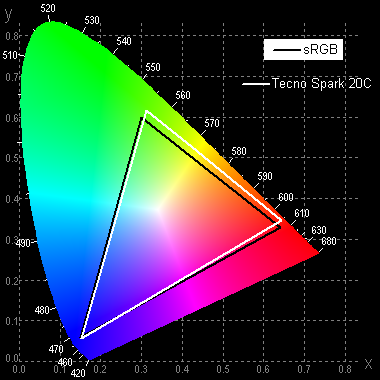
The spectra show that the matrix filters moderately mix the components with each other:
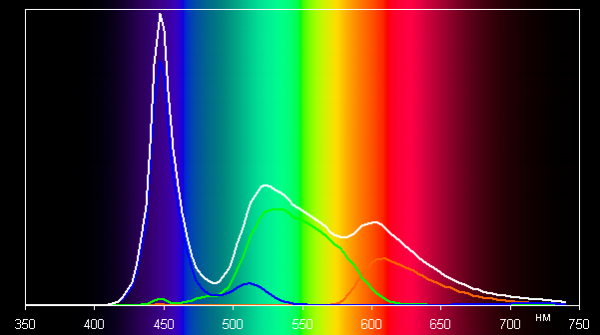
By default, the balance of shades on the gray scale is a compromise, since the color temperature is significantly higher than the standard 6500 K and is equal to 8200 K on a white background. There is a setting that allows you to reduce the intensity of the blue component.

In general, high screen brightness can affect your circadian rhythm (see article on the 9.7-inch iPad Pro), but this effect can be reduced by turning the brightness down to a low but comfortable level. Changing the color balance, especially reducing the contribution of blue, does not make sense. The setting is useless for color balance correction, since even with minimal correction the color temperature remains below the standard 6500 K (more precisely, 6400 K). It is recommended to leave everything at default to achieve maximum brightness. Although the color temperature is above standard values, the blackbody deviation (ΔE) remains below 10, which is considered acceptable for a consumer device. Also, color temperature and ΔE change little from hue to hue, which has a beneficial effect on the visual assessment of color balance. (The darkest gray areas can be neglected because color balance is less important there and color measurements at low brightness are subject to greater uncertainty.)
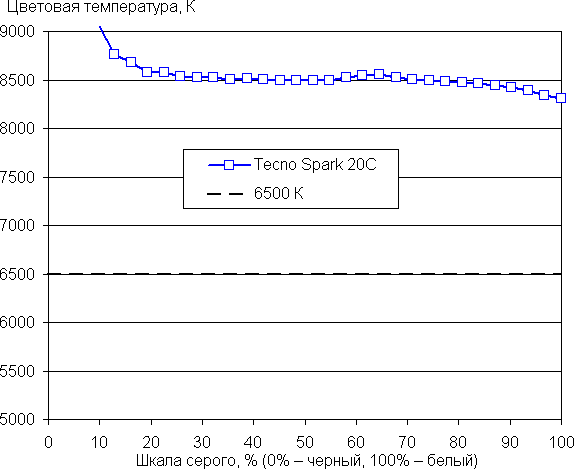

In the screen settings, you can enable a mode with an increased refresh rate of up to 90 Hz, which at least leads to an increase in the smoothness of scrolling lists in the menu.
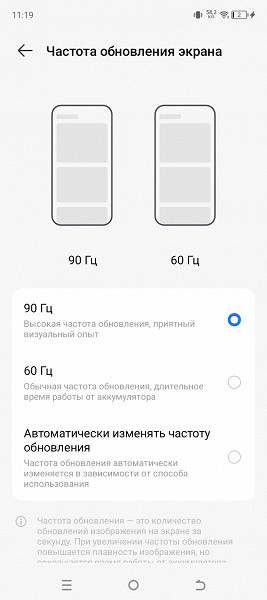
Apparently, this device does not support DisplayPort Alt Mode for USB Type-C, which means that it is not possible to output image and sound to an external device when connected to a USB port.
To summarize: the screen has a high maximum brightness (530 cd/m²) and excellent anti-glare properties, which allows you to use the device even outdoors on a bright sunny day. In complete darkness, the brightness can be reduced to a comfortable level (4 cd/m²). It is possible to use a mode with automatic brightness adjustment, which works adequately, but does not provide the user with extensive settings. Among the advantages of the screen, it is worth highlighting the presence of an effective oleophobic coating, the absence of an air gap between the layers of the screen and the absence of visible flicker. The contrast is high (1600:1), the refresh rate reaches 90 Hz, and the color gamut is close to sRGB. However, some disadvantages include reduced resolution, poor black stability when looking away, and aggressive dynamic brightness adjustment that can't be turned off. Even taking into account the importance of these characteristics for this class of devices, the quality of the screen cannot be considered high.
Camera
The rear panel of the Tecno Spark 20C features three round glass panels of the same size. However, it is worth noting that only one of them is the main camera, equipped with a 50 MP sensor and an f/1.6 lens. This camera supports PDAF phase detection autofocus, but does not have image stabilization. The other two glasses serve as an auxiliary sensor and a built-in bright LED flash, respectively.
In default mode, the Tecno Spark 20C camera produces images using pixel binning, resulting in a resolution of 12.5 MP. However, it is possible to take pictures in full resolution at 50 megapixels. Smaller photos look best, as limited sensor capabilities can cause unwanted artifacts in full-size images. Despite this, smaller photos have greater detail.
The camera produces bright images while paying attention to maintaining a high exposure, which sometimes results in overexposed areas in most photos. Perhaps a better solution would be to limit yourself to dark, but more contrasting images. The dynamic range is not enough to capture the lightest and darkest details at the same time.
However, taking into account the budget category, the shooting quality can be considered acceptable. In bright daylight, detail is at a reasonable level and is also acceptable indoors. Despite the noticeable increase in contour sharpness, it remains within acceptable limits. There are traces of noise in the photos, but they don't seem too disturbing. Color tones may appear somewhat unnatural, and if there is snow in the frame, the white balance may lean towards the blue spectrum. There is enough richness and entertainment in the thumbnail images, which makes this smartphone a very acceptable option in its price segment.
As lighting deteriorates, the quality drops significantly, details disappear, and noise appears.
Example of night shooting:
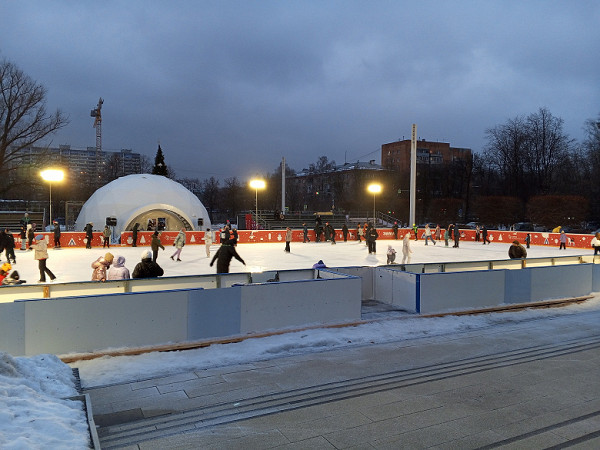
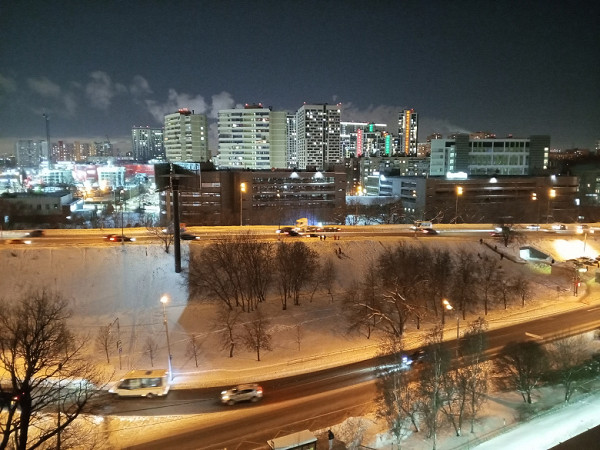
Digital zoom is done by digitally enlarging the central part of the picture in both resolution options, instead of taking a 12.5 megapixel crop of the full-size version for the picture. So for practical purposes such a zoom is useless.
The front camera provides images with very low detail. Despite this, the pictures remain bright and contrasty, although color reproduction may be distorted. It is suitable mainly for taking screenshots of the smartphone itself and is less suitable for other purposes.

The smartphone can shoot video at a maximum resolution of 1080p@30 fps without stabilization. The image is bright, but the detail is low. This is the most basic video quality.
Telephone and communications
The Tecno Spark 20C smartphone provides support for mobile networks up to 4G, ensuring stable operation in wireless networks within the city limits of the Moscow region. He shows confidence by not losing connection and quickly restoring it after breaks.
The device is also equipped with a wireless adapter supporting Wi-Fi 5 (802.11a/b/g/n/ac, 2.4/5 GHz) and Bluetooth 5.2, and also supports NFC.
The single-channel satellite navigation module interacts with GPS, as well as Glonass, Galileo and BDS. Detecting the first satellites during a cold start may take some time, but the positioning accuracy is satisfactory.
The interlocutor's voice through the speaker is not too loud, but quite intelligible. The built-in vibration motor has average power. All necessary built-in sensors, including a gyroscope, are provided.
Software and multimedia
Tecno Spark 20C uses Android 13 operating system with HiOS 13.5 skin. This interface, while not the fastest, is quite stable, and has undergone significant changes over the past few years to suit European minimalist tastes. Advertising has disappeared, all sections are now conveniently located. A notable innovation is the Dynamic Port, inspired by the iPhone's Dynamic Island, which displays various information around the front-facing camera. The top notification curtain has been divided into two parts, while official access to the Google store and applications is preserved.
It is a matter of respect that even such an affordable smartphone as the Tecno Spark 20C has stereo speakers that provide decent sound. The sound is quite loud and rich. However, it is worth noting that there is no support for aptX and aptX HD for wireless headphones, only LDAC and AAC are supported. There is also an audio output (3.5 mm minijack) for using wired headphones.
Performance
Tecno Spark 20C is powered by an octa-core MediaTek Helio G36 processor with PowerVR GE8320 GPU graphics accelerator. The amount of RAM is 4 or 8 GB, and 128 GB of internal memory is available. Storage can be expanded using a memory card up to 1 TB. The smartphone supports connecting external devices via the USB Type-C port in USB OTG mode.
This platform was introduced in 2022 and is manufactured using a 12nm process. Currently, it is an entry-level solution, with a score of less than 150 thousand points in the AnTuTu test and a video accelerator that does not support the Vulkan API. However, the performance is sufficient for the system to run smoothly.
Tecno Spark 20C is powered by an octa-core MediaTek Helio G36 processor with PowerVR GE8320 GPU graphics accelerator. The amount of RAM is 4 or 8 GB, and 128 GB of internal memory is available. Storage can be expanded using a memory card up to 1 TB. The smartphone supports connecting external devices via the USB Type-C port in USB OTG mode.
This platform was introduced in 2022 and is manufactured using a 12nm process. Currently, it is an entry-level solution, with a score of less than 150 thousand points in the AnTuTu test and a video accelerator that does not support the Vulkan API. However, the performance is sufficient for the system to run smoothly.
Testing in comprehensive tests AnTuTu and GeekBench:
For convenience, we have compiled all the results we obtained when testing the smartphone in the latest versions of popular benchmarks into tables. The table usually adds several other devices from different segments, also tested on similar latest versions of benchmarks (this is done only for a visual assessment of the obtained dry figures). Unfortunately, within the framework of one comparison it is impossible to present the results from different versions of benchmarks, so many worthy and relevant models remain “behind the scenes” — due to the fact that they once passed the “obstacle course” on previous versions of test programs.
| Tecno Spark 20C (Mediatek Helio G36) | Tecno Spark 20 (Mediatek Helio G85) | Vivo V27 (Mediatek Dimensity 7200) | Poco X5 Pro 5G (Qualcomm Snapdragon 778G) | Tecno Pova 5 Pro (Mediatek Dimensity 6080) | |
|---|---|---|---|---|---|
| AnTuTu (v9.x) (bigger is better) | 125530 | 256902 | 602528 | 536193 | 397188 |
| GeekBench 6 (bigger is better) | 184/822 | 420/1379 | 1198/2686 | 941/2640 | 759/2053 |
Testing the graphics subsystem in 3DMark and GFXBenchmark gaming tests:
| Tecno Spark 20C (Mediatek Helio G36) | Tecno Spark 20 (Mediatek Helio G85) | Vivo V27 (Mediatek Dimensity 7200) | Poco X5 Pro 5G (Qualcomm Snapdragon 778G) | Tecno Pova 5 Pro (Mediatek Dimensity 6080) | |
|---|---|---|---|---|---|
| 3DMark Wild Life Extreme Vulkan (bigger is better) | — | 190 | 1165 | 687 | 368 |
| 3DMark Wild Life Vulkan (bigger is better) | — | 736 | 4186 | 2450 | 1327 |
| GFXBenchmark Manhattan ES 3.1 (Onscreen, fps) | 14 | 31 | 59 | 49 | 24 |
| GFXBenchmark Manhattan ES 3.1 (1080p Offscreen, fps) | 8 | 16 | 68 | 56 | 28 |
| GFXBenchmark T-Rex (Onscreen, fps) | 32 | 62 | 110 | 109 | 59 |
| GFXBenchmark T-Rex (1080p Offscreen, fps) | 23 | 45 | 160 | 132 | 69 |
Testing in browser cross-platform tests:
| Tecno Spark 20C (Mediatek Helio G36) | Tecno Spark 20 (Mediatek Helio G85) | Vivo V27 (Mediatek Dimensity 7200) | Poco X5 Pro 5G (Qualcomm Snapdragon 778G) | Tecno Pova 5 Pro (Mediatek Dimensity 6080) | |
|---|---|---|---|---|---|
| Google Octane 2 (bigger is better) | 5850 | 14015 | 29329 | 27070 | 19194 |
| JetStream (bigger is better) | 22 | 43 | 87 | 73 | 50 |
AndroBench memory speed test results:

Heat
We test for performance degradation when heated using the Burnout Benchmark program, which allows you to load the CPU, GPU and NPU:
| Stress on | Heating performance as a percentage of maximum |
|---|---|
| CPU | 55% |
| GPU | 60% |
| NPU | 38% |
Battery life
The Tecno Spark 20C smartphone has a battery with a typical today capacity of 5000 mAh. With it, the smartphone demonstrates average autonomy.
Testing has traditionally been carried out at the usual level of power consumption without using power saving functions, although the device has them. Test conditions: the minimum comfortable brightness level was set (approximately 100 cd/m²). Tests: continuous reading in the Moon+ Reader program (with a standard, light theme); continuous viewing of video in HD quality (720p) via your home Wi-Fi network; Injustice 2 game with automatic graphics settings.
| Battery capacity | Reading mode | Video mode | 3D Game Mode | |
|---|---|---|---|---|
| Tecno Spark 20C | 5000 mAh | 18:30 | 17:00 | 7:30 a.m. |
| Tecno Pova 5 Free Fire | 6000 mAh | 22:30 | 16:30 | 7:30 a.m. |
| Tecno Pova 5 Pro | 5000 mAh | 20:00 | 13:30 | 7:00 am |
| Tecno Camon 20 Premier 5G | 5000 mAh | 25:00 | 19:00 | 7:00 am |
| Vivo V27 | 4600 mAh | 25:00 | 19:00 | 7:00 am |
| Poco X5 Pro 5G | 5000 mAh | 18:00 | 20:00 | 7:00 am |
| Realme 10 Pro+ 5G | 5000 mAh | 19:00 | 18:00 | 5:00 a.m. |
All these are the maximum possible figures obtained under “ideal” conditions, including without installed SIM cards. Any changes in the operating scenario will most likely lead to worse results.
Using the included 18 W mains charger, the smartphone is fully charged within three hours. Wireless charging is not supported.
Bottom line
For a device that is almost in the low price range, the Tecno Spark 20C is one of the best smartphones in terms of price and functionality. Other, more established manufacturers aren't prepared to provide the plethora of options that Tecno has included in its most affordable smartphone for the same money.


